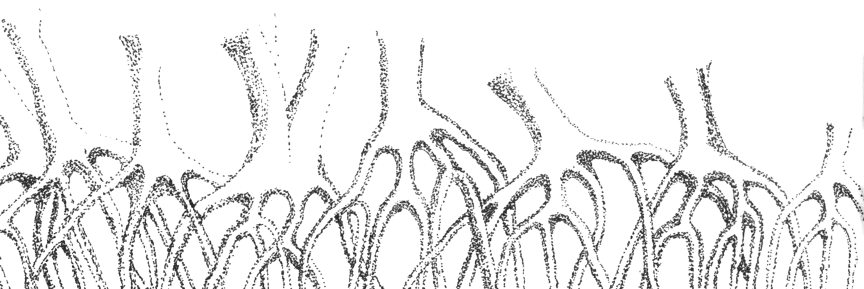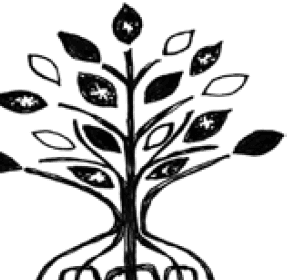Knowing Marj Within the Space of my Lifetime
Macario D. Tiu
I first met Marj in 2001, when she graciously accepted our invitation to panel in the third Ateneo Summer Writers Workshop. I was then chair of the Humanities Division of the Ateneo de Davao University (ADDU), and we thought that to lend weight to our little effort at developing the literary arts in Davao, we should invite somebody who was a nationally known writer who spoke Bisaya. Our workshop accepted English, Tagalog, and Bisaya entries, and we wanted our guest panelist to be able to engage in the three languages, particularly Bisaya. And Marj fit the bill.
I had heard of Marj much earlier of course. She was already an established writer who was quite popular among local writers. And so having her in our workshop was an event. After all, our workshop was very parochial; the participants were all Ateneans, all beginning writers. And so they were thrilled to have a literary star in the panel.
As for me, I was delighted that Marj could switch from English to Bisaya with ease as she attacked an entry. That was important to me. Having worked at the grassroots for quite a time, I had become an advocate of writing in the local language. In Davao, the community theater groups, pioneered by Karl Gaspar, Nestor Horfilla, and Don Pagusara had been using Bisaya in their productions since the 1970s and 1980s, but in fiction and poetry, English remained the dominant language in the 1980s and 1990s, even today.
As I also began as an Inglesero, we in the workshop selection committee were amused but quite accommodating with entries that had American characters and settings in America. It told us what the students were reading. Our hope was that, in the course of the workshop, perhaps we could influence the young writers to also begin to write in Bisaya or whatever is their native tongue. A most difficult challenge, as our ideal graduate is a good Inglesero.
It was important therefore to have a Bisaya panelist. I think at that time Marj was mostly writing in English. But never mind, she talked in English and in Bisaya. In Davao, we talk in Bisaya, Tagalog, and English, not to mention a host of indigenous and other settler languages. We are so linguistically mixed up the Cebuanos do not accept our Davao Bisaya and the Tagalogs do not accept our Davao Tagalog. We blithely murder the three languages in our daily speech, but English comes out better in the writing because it is taught in school.
Marj was most helpful to the young writers because she was insightful and could make the unshaped ideas and images more focused as a guide for revision. She was also very encouraging and would point out the gems in the works of the young writers. What I remember most of her appreciation for a poem was that she described an image as kagumkom. Crisp in English, but the Bisaya word explodes. It stuck in my mind. I would have used lami, delicious. But it simply has no bite.
And I think that is the strength of Marj. She can find the right word for an idea or an image. She has the ability to tap into her inner ear and eye to reproduce the exact inner voice, like kagumkom — the cat in the pit of the empty flowerpot, to borrow from William Carlos Williams. I totally agree with Leoncio Deriada who described Marj as well as Merlie Alunan’s poems as mosaic art. Each word is carefully chosen like a piece of precious stone to compose a poem with a sound that sings, and an image that teases, at once ambiguous and crystal clear.
I do not know when Marj began to write in Bisaya, but I am glad to see at least her own translations of her works in Bisaya. The language issue is highly contentious, schooled as we are in a residual colonial education that we have not quite thrown into the Bankerohan River. While I strongly advocate writing in the local language to reach the vaster audiences of our respective language communities, I also cannot help but write in English when it is convenient. It is a continuous struggle experienced by the colonized. What is important is that we return to community however and whenever.
Going by the experience of other countries, I believe that ultimately it is literature written in the language of the people that will survive the test of time. Language is the soul and collective memory of the people. For as long as, say, the Bisaya people exist in this world, the Bisaya language will persist and grow vigorous. And with it, Bisayan literature. In the long run, borrowed colonial languages will become language dodos in the community.
So I find Marj’s effort in negotiating the linguistic terrains in her mind commendable, and successful. When I first read the Bisaya version of her poem “Origami,” I felt wonderment. Yes, the Bisaya for crane is talabon! I found that satisfying because I also played around with the origami bird in a Bisaya short story titled “Tsuru.” But I never managed to translate tsuru as talabon. It was just a langgam-langgam nga ginama sa papel (a bird made of paper).
It is interesting how writers can transmute an object into multifarious meanings. The crane in current Japanese symbology stands for peace. The popular Russian song "Zhuravli" turns dead soldiers into white cranes winging their way home. In my fiction “Tsuru,” the paper crane suggests a multi-layered signification for friendship at wartime, while Marj turns the crane into a poem.
I think that Marj’s talabon will be more remembered than my langgam nga papel. I am amused at how I made my paper bird fly — its wings flap if you pull the tail. How unimaginative. In the hands of Marj, the talabon is a folded paper gathering wind, takes flight as a poem, and then turns back into paper “pure and empty.” So short, so rich, so magical. On the other hand, my paper bird falls to the ground and rolls on the sand as the wind carries it inexorably to be devoured by the waves.
Many years ago, while at Dumoy beach, I picked up a fist-sized stone because it glinted in the sun and caught my eye. On closer inspection, I saw shiny fragments of coal embedded in the stone. I surmised these were ancient twigs caught in some primeval sediment and became petrified. At that moment I turned philosophical. I was holding in my hand an object that could be several million years old. Mt. Apo loomed in the distance. I knew the big island rose eons ago from an ancient sea. And now I was at Dumoy beach, holding an ancient piece of rock, and somehow what came to my mind was how infinitesimal and transient I was. It was an electrifying realization.
I looked around me and saw my parents and my siblings. There were also some friends. And I was thinking, of millions and millions of people in the world, they would be my parents; they would be my brothers and sisters, and they would be my friends. Of all the millions of years that had passed and will pass, our lives would cross at that particular moment at that particular beach. And I was overwhelmed with utter joy and gratitude for their presence in my life.
I wrote about this experience in an essay titled “Rock of Ages,” which was published in the 1990s in Lawig, the journal of the Philosophy Department of the Ateneo. I now forget the exact year of publication, but not the core idea of the essay: How precious is life, a mere flash in the vast mystery of eternity, and how happy I am to have known people that enrich my life.
Over the years, I would encounter many people in many situations, but many just come and go. But in our life, there would be several people who would stay around us because they are a pleasure to be with and make an imprint on us. In my life, that would include Marj. I have worked with Marj in several workshops and conferences. She is very down to earth, and provides you with warm companionship. I am happy to have known her and to enjoy the transformative power of her poetry within the space of my lifetime.
The stone now functions as paper weight on my desk. I am tempted to make a talabon and see if it can gather wind and fly and not fall to be swallowed by the sea.
Macario D. Tiu
October 14, 2021








